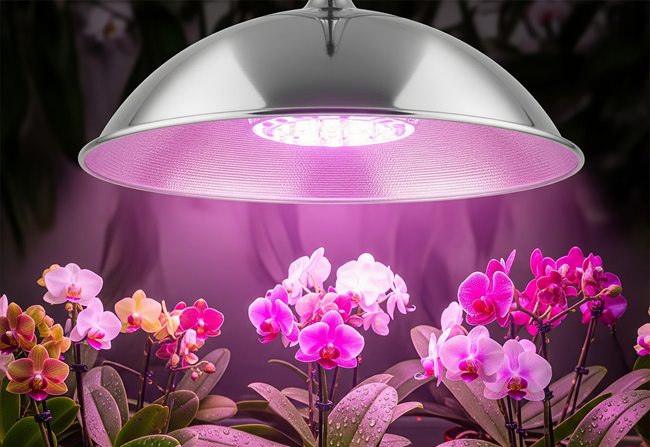
Folks who use artificial lighting will sometimes spend a lot of time debating the shape, material and color of surfaces intended to distribute light efficiently to their plants. Likewise, greenhouse growers will often want to use a north-facing wall as a giant reflector in an attempt to eke out that last, little bit of incoming light intensity.
Some of the more common materials used for light reflection include polished aluminum, aluminized Mylar sheets (“space blankets”), aluminum foil and both glossy and matte white paint. Borrowing an oft-heard question from growers, “Which is best?” Responding with another oft-heard response, “It depends.”
Starting with a single, un-reflected fluorescent tube suspended horizontally above the plants, it’s easy to picture that the light radiates in all directions, and that only the approximately bottom 20%-30% of the radiated light reaches the plants. The rest of it is more or less lost unless it is reflected downward.
The best reflector design captures the “lost” light and redirects it to the desired area of the growing space below. A flat reflector above the bulb only redirects the top 20% or 30% of the light back to a usable area. A reflector that is curved around the sides of the bulb captures more of the emitted radiation and directs it downward. A reflector that has a true parabolic shape, with the bulb placed at its focus, will provide the most concentrated light intensity, but it will be limited to a relatively narrow band down the length of the bulb tube. If that parabola is “opened up”, it broadens the effective projected area, while only reducing the intensity of small amount.
Most readily available light fixtures are equipped with reflectors bent at angles around the bulb side – simulating, not quite as effective as a semi-parabola, but still extremely good and usable.
So what about the appearance and color of the reflector surface itself? Many are available, from specular (polished or mirror-like) aluminum or stainless steel, to roughened or “burnished” aluminum, to painted white. The choice of reflector finish depends a great deal upon your intended use.
If your intent is to provide the maximum light intensity your bulbs put out to the plants below them, a mirror-like finish is the proper choice as it directly reflects the light output. If on the other hand, your intention is to light a room, then a light scattering surface such as a white paint or burnished metal is a better choice. Folks looking to maximize available light in a greenhouse should cover the inside of a north-facing wall with matte white paint. Glossy paint should be avoided, as any glossy surface, like aluminized Mylar, is too reflective and will only reflect incoming light to the floor rather than scattering it to the plants.
Ray Barkalow has been growing orchids for over 45 years, and owns First Rays, which offers horticultural products to the hobby grower. He may be contacted at raybark@firstrays.com and you can visit his website at FirstRays.com.




Comment here